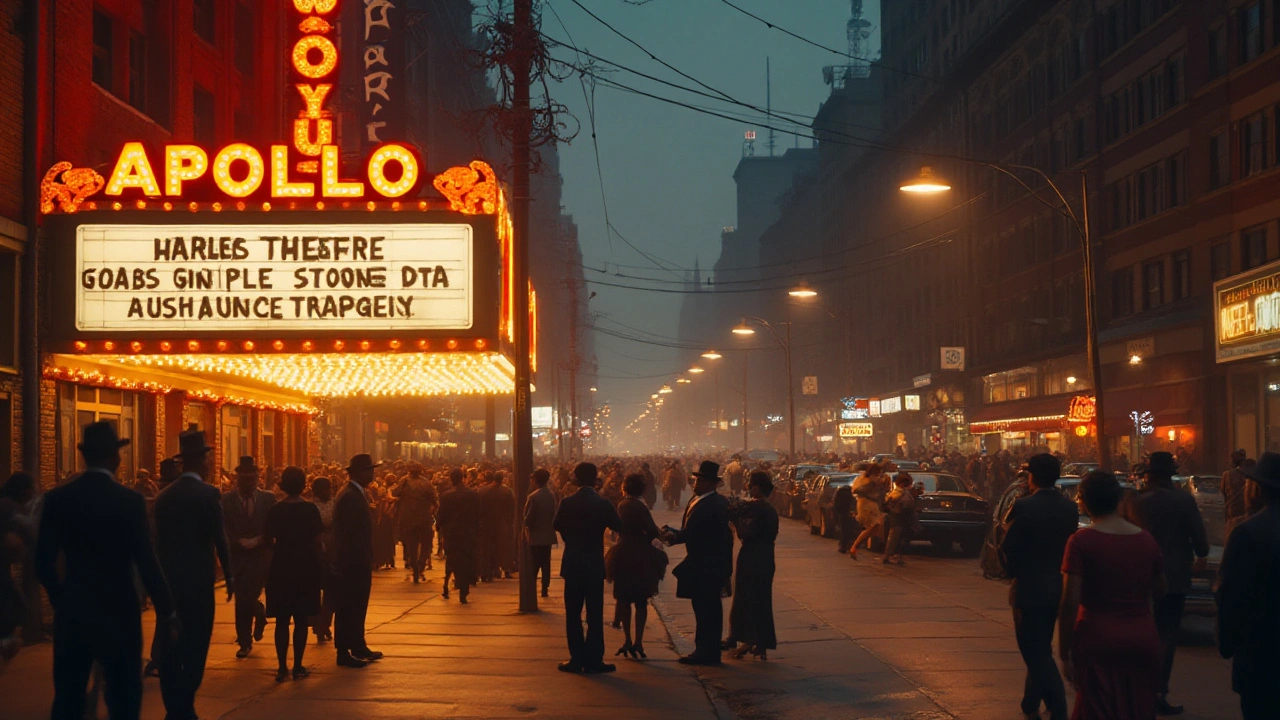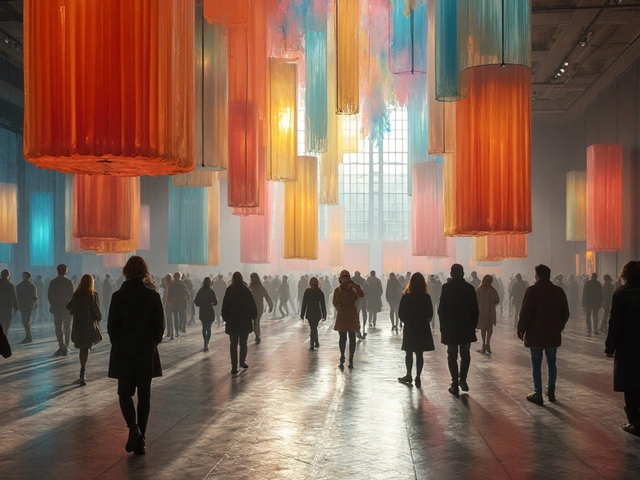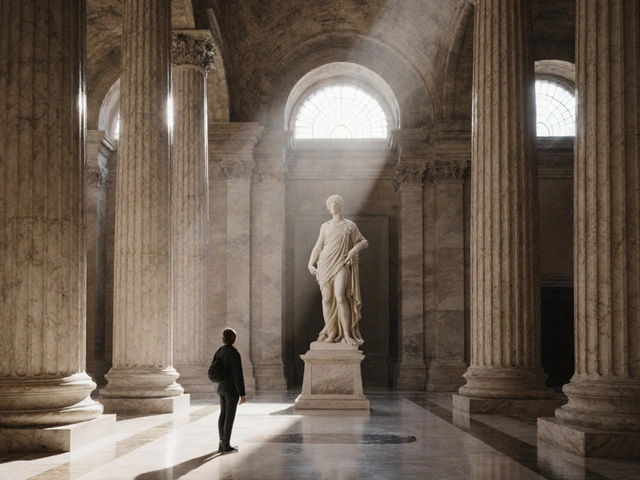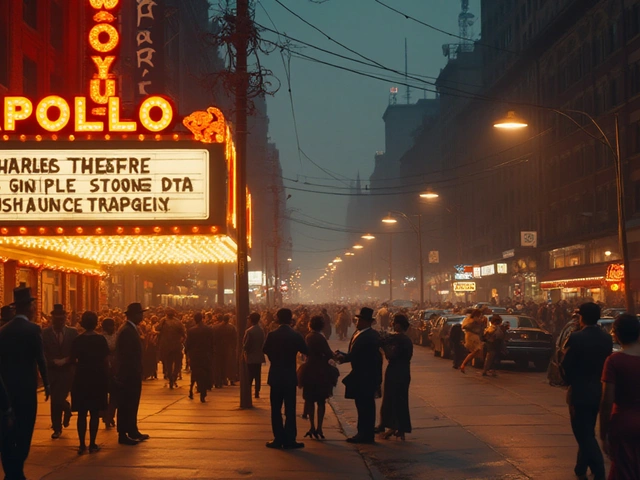The Harlem Renaissance stands as a towering beacon of change and creativity, a powerful movement that reshaped American culture in ways still felt today. During the early 20th century, Harlem became the cultural epicenter for African American artists, musicians, writers, and thinkers who sought new ways to express their experiences and redefine their identity.
Anchored in New York City, this vibrant period fueled an explosion of artistic output that challenged prevailing stereotypes and celebrated the uniqueness of Black culture. Through literature, visual arts, and music—especially jazz—it created a new narrative that captured the complexities and richness of African American life.
As we journey through this transformative era, we uncover the stories of influential figures whose work didn't just reflect the world around them but also inspired profound introspection and dialogue across society. These pioneers laid the groundwork for future generations, leaving an indelible mark on everything from civil rights to contemporary pop culture.
This exploration of the Harlem Renaissance will delve into its origins, highlight key contributors, examine its significant cultural expressions, and discuss its enduring influence. It's a celebration of the power of creativity to reshape the world, a testament to the enduring spirit of a community that turned dreams into tangible change.
- Origins and Causes
- Artistic and Literary Flourishing
- Music and Cultural Expression
- Key Figures and Influences
- Legacy and Impact
Origins and Causes
The Harlem Renaissance, an artistic revolution, blossomed in the vibrant Harlem neighborhood of New York City between the 1910s and mid-1930s. But this cultural awakening was far from an isolated phenomenon; it was rather a dramatic product of numerous social, economic, and political factors. One key catalyst was the Great Migration, where approximately six million African Americans moved from the deeply segregated South to the more industrial North. This mass relocation, beginning around 1916 and continuing for several decades, was driven by a desperate need to escape oppressive Jim Crow laws and the lure of better employment opportunities that Northern cities promised. The influx of Black populations into urban areas such as New York, Chicago, and Detroit set the stage for their voices to be amplified in unprecedented ways.
As African Americans settled in Harlem, it quickly became a melting pot of talent and ambition. The neighborhood was buzzing with energy, filled with artists, musicians, thinkers, and dreamers. Harlem offered a sanctuary where they could express freely without the domestic terrorism orchestrated by organizations like the Ku Klux Klan. This new neighborhood was a contrast to the brutality many had left behind, and it opened doors to possibilities that would have been inconceivable in the South. Economically, World War I played a significant role in creating this environment by providing job openings in Northern industries, previously unavailable to African Americans due to discriminatory practices. As white men went off to war, industries turned to Black workers to fill the vacuum.
The Harlem Renaissance was also nurtured by the intellectual currents of the time. The early 20th century saw the flowering of philosophies like Pan-Africanism and the New Negro Movement, which advocated for racial pride, self-respect, and cultural expression. Thought leaders such as W.E.B. Du Bois, who championed the idea of the 'Talented Tenth', and Marcus Garvey, with his vision of Black nationalism, provided the ideological framework that supported the Renaissance. Both intellectual rigor and artistic innovation were viewed as crucial tools in the fight against racial injustice, as they could alter perceptions and inspire a reevaluation of African American identity. As literary and artistic engagement grew, Harlem emerged as the cultural capital where these new ideas were not only imagined but also vividly articulated.
In this burgeoning cultural landscape, government and philanthropy also played pivotal roles. During the 1920s, organizations like the National Association for the Advancement of Colored People (NAACP) and the National Urban League positioned themselves at the forefront of civil rights advocacy, offering platforms that facilitated artistic and intellectual exchange. In addition, magazines like 'The Crisis' and 'Opportunity' published works by budding African American writers and artists, enabling them to reach wider audiences. Philanthropic patrons, many of whom were white, also supported these burgeoning talents by offering financial assistance and creating spaces for artistic pursuits. This patronage was often double-edged, tinged with the power dynamics of race and privilege, yet it undeniably propelled the movement into the spotlight.
As this unique blend of migration, economics, intellectual thought, and patronage coalesced, the Harlem Renaissance exploded into a beacon of cultural vitality. It was a city-wide, and eventually nationwide, testimonial of the possibilities and creativity flushed with the color and rhythm of African American culture. As Langston Hughes, one of the era’s most prolific poets, eloquently captured the spirit of the time:
'Harlem was in vogue.'This sentiment holds testament to the rise of a community that found its voice in the artistic expressions that echoed far beyond the confines of Harlem.
Artistic and Literary Flourishing
The period of the Harlem Renaissance is a captivating chapter in American history, characterized by a remarkable outpouring of artistic and literary creativity. During this time, African American writers and artists drew inspiration from the cultural dynamics of Harlem, which had become a vibrant and diverse community, rich with stories and life experiences. Their work sought to provide a voice to the Black experience, offering perspectives that had long been marginalized in mainstream America. Harlem was transformed into a place where African American artists could thrive, experiment, and produce work that would echo throughout generations.
Writers like Langston Hughes, Zora Neale Hurston, and Claude McKay were at the forefront of this literary renaissance, using poetry, novels, and essays to capture the joys and struggles of Black life in America. Hughes' poems like "The Negro Speaks of Rivers" and "Montage of a Dream Deferred" became synonymous with the movement, reflecting a deep connection to African heritage and a profound sense of resilience. Similarly, Zora Neale Hurston, with her novel "Their Eyes Were Watching God," explored themes of identity and empowerment, expressing an authentic voice that drew from her Southern roots and folklore traditions.
The art world was equally transformed as visual artists portrayed the richness of the African American culture. Painters such as Aaron Douglas used their canvases to project bold, symbolic imagery that depicted both contemporary Black life and its historical context. His work often featured silhouetted figures that blended African motifs with modernist aesthetics, creating a unique style that embodied the essence of the Harlem Renaissance. Sculptor Augusta Savage also played a significant role in the movement, not only through her powerful sculptures but also as a mentor to many emerging artists of her time, working to ensure that art was accessible to her community.
Indeed, the literary and artistic works of this period were not just about self-expression; they were a catalyst for a broader cultural dialogue. These creations questioned societal norms and offered a rich tapestry of voices and visions that demanded attention and respect. The sheer volume and impact of the work produced during the Harlem Renaissance demonstrated that art could inspire social change, uniting people through shared stories and experiences. It was, as W.E.B. Du Bois put it, "a sustained movement for freedom, equality, and justice drawing strength from the collective soul of Black artistry."
"Art must discover and reveal the beauty which prejudice and caricature have overlaid." – Alain Locke, the philosophical architect of the movement.
Such powerful statements illustrate the broader implications of the Harlem Renaissance's artistic accomplishments. They shaped not only African American culture but also had a profound impact on American society as a whole, influencing future movements for civil rights and social equality. By breaking barriers and redefining the boundaries of who could be an artist, this era heralded a new appreciation for diversity in cultural contributions. The enduring legacy of this time is a testament to the transformative power of creativity in the quest for genuine representation and equality.
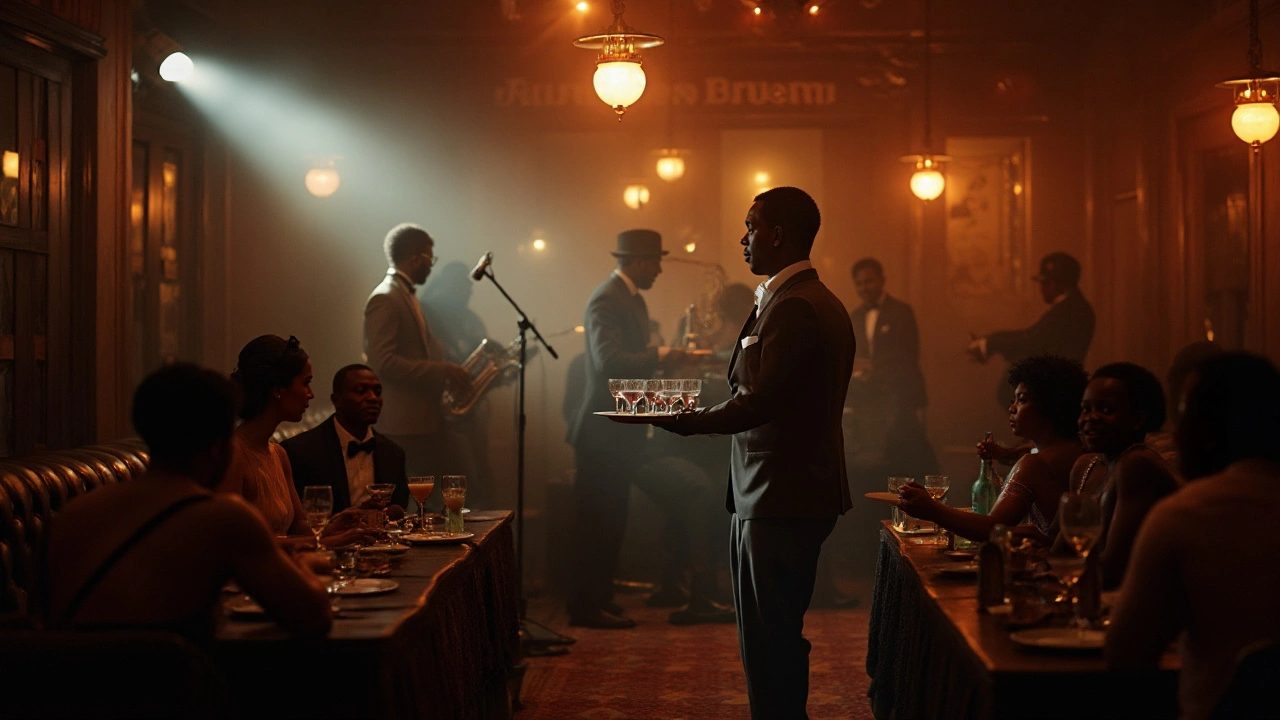
Music and Cultural Expression
The Harlem Renaissance was as much a revolution of sound and rhythm as it was of words and images. Music became the heartbeat of the movement, with jazz and blues morphing into defining elements of this cultural renaissance. Harlem's night clubs and ballrooms were lit with the incandescent glow of creativity, places where legendary artists would enchant diverse audiences with their profound musical expressions. At the forefront of this sonic revolution were figures like Duke Ellington, Bessie Smith, and Louis Armstrong, whose contributions elevated jazz to the forefront of American culture.
Jazz, with its roots deep in African American communities, became a universal language during the Harlem Renaissance. It embodied the spirit of improvisation and innovation that was sweeping across Harlem. Its syncopated rhythms and swinging beats offered a fresh departure from the classical norms, making it irresistible to new audiences. Jazz was not just music; it was a cultural statement, a call for liberation and self-expression. Its growing popularity spread beyond Harlem, transforming nightclubs like the Cotton Club and the Apollo Theater into sanctuaries for this vibrant art form.
Music was indeed a catalyst for social change, and women like Billie Holiday lent their voices to bring emotional depth and narrative to jazz. Her rendition of "Strange Fruit," highlighting the horrors of racism, became an anthem for those seeking justice and equality. This theme resonates with Langston Hughes' words when he said,
"Jazz is a heartbeat—its heartbeat is yours."The music of the Harlem Renaissance didn’t simply provide entertainment; it articulated the struggles, hopes, and aspirations of a generation striving for recognition and equality.
The cultural expressions forged in this era were diverse and expansive, reflecting the multifaceted identity of African Americans. Aside from jazz, blues found its home in Harlem, narrating personal stories of love, loss, and resilience. As these genres flourished, so did dance styles that accompanied them. The Charleston and the Lindy Hop harnessed the ecstatic energy of jazz, translating it into jubilant motion and community connection. This era made music more than just an auditory experience—it was a dynamic expression of life, a unifying force that beckoned all to participate.
The influence of the Harlem Renaissance on music cannot be overstated. It provided a platform not just for musicians but for African American culture to be embraced and celebrated. In a time when racial discrimination was rampant, the sounds emanating from Harlem challenged the status quo and demanded a re-evaluation of cultural boundaries. The legacies of these musical innovations continue to resonate today, reminding us of the transformative power that lies in cultural expression and artistic ingenuity.
Key Figures and Influences
The Harlem Renaissance was vibrant with an extraordinary array of personalities who not only embodied the spirit of the movement but also became the harbingers of change in African American culture. Among these luminaries, the name Langston Hughes stands out, an individual whose poetry and prose captured the essence of this dynamic period. Hughes, through works like 'The Weary Blues,' illustrated the complexities of Black life with lines steeped in rhythm and soul, echoing the trials and triumphs experienced by many. His ability to weave the African American experience into his writings made him a central figure in this cultural reawakening.
Another giant of the era was Zora Neale Hurston, whose storytelling prowess brought forth narratives rich with folklore and empowered voices from the southern Black communities. Her seminal novel, 'Their Eyes Were Watching God,' remains a touchstone for exploring themes of race and gender. Hurston's work broke barriers, portraying African American life with authenticity and vibrancy. Hurston famously said, "If you are silent about your pain, they'll kill you and say you enjoyed it," encouraging generations to speak their truths through art.
Musicians were pivotal in bringing the art forms of the Harlem Renaissance to broader audiences. Duke Ellington, with his unparalleled skill as a bandleader and composer, turned jazz—a hallmark of the movement—into an irresistible force. His performances at venues like the Cotton Club enthralled audiences far and wide, showcasing the elegance and innovation that defined the Renaissance. His compositions, rich with layered harmonies and vibrant rhythms, conveyed a narrative of excellence and creativity.
Jazz wasn't alone in the spotlight. Billie Holiday, with her soulful voice and emotive presence, also left a lasting imprint. Her song 'Strange Fruit,' a poignant critique of racial violence, became a powerful anthem of its time. Through her music, Holiday connected deeply with her listeners, offering a voice of resilience and defiance against injustice.
Visually, artists like Aaron Douglas made significant strides. His art captured both modernist sensibilities and African heritage, reflecting the dynamic spirit of the era. Douglas's work, characterized by silhouettes and geometric designs, became iconic representations of the Renaissance ethos. His murals and paintings connected audiences deeply with African American history and culture.
These individuals were not just creators—they were pioneers breaking new ground, shaping a cultural landscape that demanded attention and respect. Their legacies are a testament to the Harlem Renaissance as a pivotal force in American cultural and social transformation, inspiring future generations to carry forward the torch of creativity and progress.
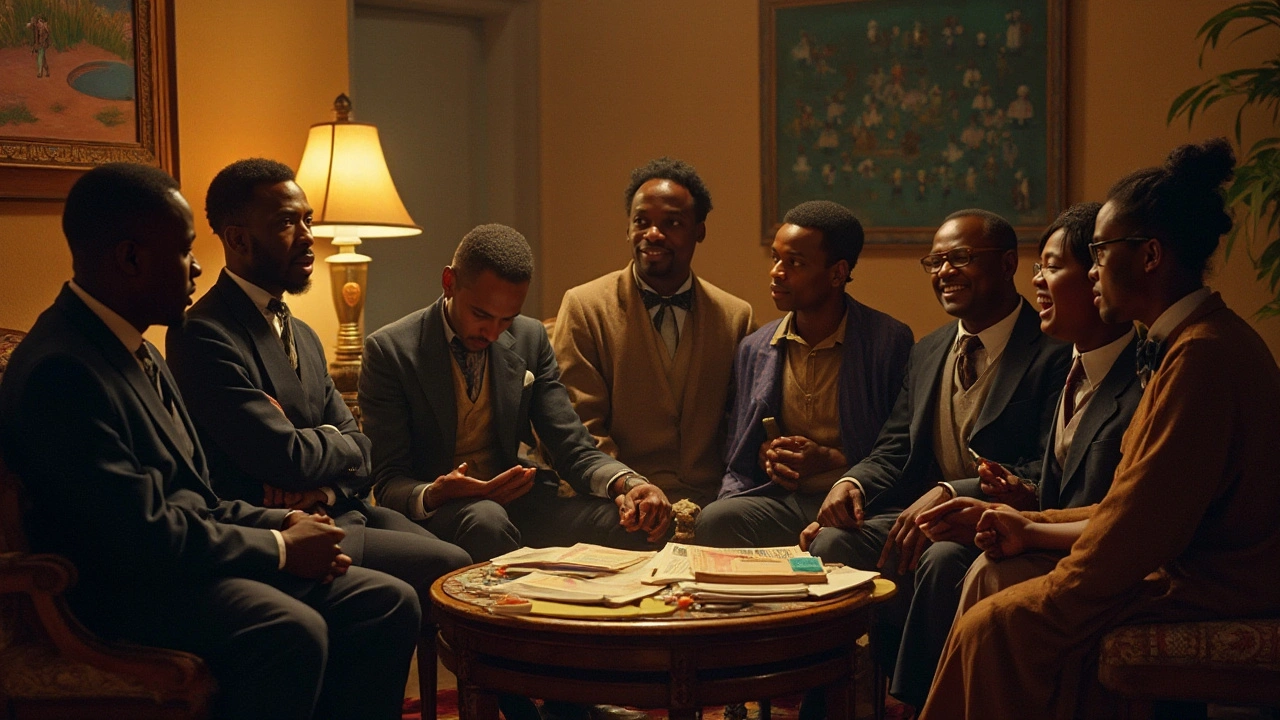
Legacy and Impact
The Harlem Renaissance was more than just a cultural movement; it was a force that fundamentally altered the course of American society and its understanding of race, identity, and art. The reverberations of this vibrant period continue to echo through time, visible in the threads of contemporary culture, politics, and social justice movements. As African American artists and intellectuals pushed the boundaries of expression, they laid the foundation for the Civil Rights movements of the mid-20th century, planting seeds of empowerment and pride that would later bloom into calls for equality and change.
One of the most profound impacts was on the art world. The explosion of Black artistry during this era set precedents that would challenge and expand the traditional canon of American culture. Langston Hughes, a towering figure from this time, eloquently captured the spirit of the movement when he wrote, "The Negro is in vogue." These words were not merely a recognition of the cultural exuberance in works but a declaration of identity and pride that resonated far beyond Harlem's borders. The power of literary voices like Zora Neale Hurston, whose works explored the nuances of African American life with depth and empathy, carved spaces for Black narratives in mainstream literature that can still be felt today.
The music of the Harlem Renaissance, particularly jazz, has also left a lasting legacy. Artists such as Duke Ellington and Louis Armstrong did more than entertain; they used their music to tell stories and communicate the dynamism of African American experience and creativity. Jazz wasn't just a backdrop to this cultural awakening; it was an essential vehicle of change, influencing genres worldwide. To this day, jazz remains a vital art form, celebrated for its innovative spirit and its ability to transcend cultural and racial barriers. A look at current music charts reveals jazz's influence in genres like hip-hop, which carry forward its improvisational creativity and rhythmical freedom.
Beyond art and literature, the political impact of the Harlem Renaissance cannot be overstated. It played a vital role in laying the intellectual groundwork for the Civil Rights Movement. Organizations like the NAACP, with their robust challenge against racial injustices, drew on the themes of identity and autonomy kindled by the Renaissance. As activists continued to fight for civil rights, the cultural assertions from the Renaissance served as a rallying cry, reminding America—and the world—of the rich and dignified heritage of African Americans.
"Almost all of Harlem's population came from the South, knew the harshness there, and sought nothing less than complete freedom from all forms of discrimination," wrote Nathan Irvin Huggins, offering us insight into the thriving ambition that defined this era.
In education, the ripple effects of the Harlem Renaissance spurred an emphasis on African American studies within curriculums, prompting academic institutions to create programs dedicated to exploring and celebrating Black culture and history. Students today benefit from this multidimensional understanding, encouraging them to approach American history with a broader, more inclusive lens. African American culture, thus, has emerged as a vibrant mosaic, embraced and appreciated in its complexity.
As we continue into the 21st century, the Harlem Renaissance remains a cornerstone of cultural history, reminding us of the power of expression and the importance of community. The voices that rose during this era not only captured the struggles of their time but also crafted a legacy of inspiration and resilience. In celebrating this period, we acknowledge its indelible impact—how it not only transformed Harlem but also enriched the narrative of America itself, illustrating the enduring spirit and creativity that define human experience.

